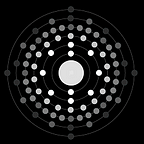This Is Not a Cat
I never really got Magritte’s most famous painting. That is, until a few weeks ago.
Sure, what it means is written on it: “Ceci n’est pas une pipe”, which means “This is not a pipe”. Yes, I can read the subtitles. It always sounded to me like one of these academic jokes. The type of joke that is meant for the few people in the know. The type of people you would expect to titter at the clever pun, rather than laugh out loud.
For whatever reason, a timely Zelensky meme was showing alongside this painting on my split screen. Then, a picture of my cat went stratospheric on Reddit. My cat got more likes than the most successful post I ever made. Now, neither do I over-estimate my reach, nor do I doubt my cat’s merits and looks. Yet, it brought to me a realisation: I have been blind all along to the significance of Magritte’s work for today’s world!
In today’s world, Magritte would be doing memes
Ceci n’est pas une pipe. Mixing picture and text. A directly descriptive clear line. An easily understandable picture. But is it?
At the time it was painted, the picture represented the rejection of coded artistic significance. It meant refusing the intellectual borders between painting, writing or any other artistic medium. Magritte was rebelling against the approved, stamped “arts” academies. Afterall, he was coming from what we would now call advertisement illustration — also called commercial painting. Like many artists before and since, his goal was to be understood without years of academic artistic training in conventions and mantras. And he succeeded. In today’s world, Magritte would be doing memes.
The cat is today’s pipe
As an ever present object in our online landscape, the cat is today’s pipe. Whenever you need a popularity boost, just post the picture of a cat. It does work. This has been going on since the internet became mainstream. Empirical experience demonstrates that we are more ready to engage with cat pictures, through likes and comments. Somehow, cats are among our basic communication pictures.
“Cats and the Internet” is such a tenet of the digital world, that it has its own Wikipedia page and Netflix documentary. Traffic data on cat pictures even powers AI to re-create artificial cats that are sure to be online successes. These cats are re-created from their most attractive fragments. Yes, LOLcats don’t even have to be real anymore.
So, what is going on here?
Much has been written about the vast online success of cats. Theories vary: pictures of cats evoke positive emotions, cats are cute, they make us laugh, the cat’s face is round and hence human-like, some cats are unusual looking. And of course, there are millions of cat owners out there too — but not as many as dog owners though.
Personally, I believe something else is at play here.
Looking at the cat pictures, videos and memes, reading the comments, likes and upvotes, there is one common point across all these posts: extremely high numbers of engagements and reactions. As if we feel compelled to be recognised as part of the group of supporters. More so than any other comparable online community. As if we like, clap, thumb up and thrive for a high mutual validation.
In my opinion, the success of cat posts actually expresses our need for digital validation and online fame. Much more than the content itself. And it allows us to have an active part in the success of the work itself. We become the vector that allows the picture to be recognised. The cat is today’s pipe.
The cat is at the centre of our new definition of success, fame and validation in the digital age
Digital reality is all about blitz successes. Going viral is nothing else than creating a highly engaging content, counted by views, likes, shares, followership, thumbs up or upvotes. The first measure of success is how many reactions your content created. Then again, reactions can be created artificially by so called click farms or automated engagement bots.
Josh Gardner correctly highlighted the following on LinkedIn: 56.9% of China’s KOL fans (Key Opinion Leaders) do not exist (based on data by Gridsum). 60% of China’s social media traffic is fake. As such, online success is not only motivated by the need for validation, as much as monetisation.
Yet, disregarding the whole phenomenon of digital influencers because the measurements can be opaque or biased is rather trite. Calling out social media influencers on their fame entails some large dose of hypocrisy. After all, someone like Mr Beast, Joe Rogan or Russell Brand, work quite hard on their success and have found a real original voice. They reinventing the format. Whether it is one million viewers and followers, or 100 thousand or 10 millions, their content still has the same reach. It is only their monetisation valuation that may differ.
Is social media success the modern day equivalent of the Magritte pipe painting?
Magritte believed that emotions and ideas could be expressed in art. He championed the freedom of interpretation against intellectual codifications. So, is the internet to be life or art?
You may object to this valuation, but no more than any other artistic valuation. “Beauty is in the Eye of the Beholder”, or rather more philosophically, in the words of Michel Foucault, we have to agree that significance may be arbitrary, circumstantial, and “conventional”. If we are to agree that we are in new technological, economic, political circumstances, then we are in new conventions as well.
So, next time you see a cool meme, or a lolcat, that is exactly Magritte’s pipe.
This is not a cat.
That is the freedom of interpretation without intellectual codifications.
Listen to the podcast here
